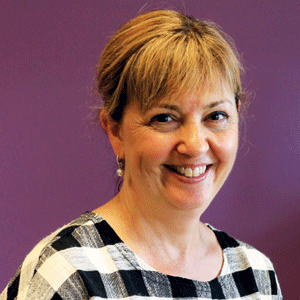THANK YOU FOR SUBSCRIBING

Paving the Way for a Digital Future
Gail Bray, Director, Wyndham Tech School, Victoria University


Gail Bray, Director, Wyndham Tech School, Victoria University
Can you briefly introduce yourself and how your journey has been in the edtech space?
I have 20 years of experience in teaching and tech and have also built greenfield and startup projects in the areas of innovation and technology. I am currently serving as the director of Wyndham Tech School at Victoria University, a facility dedicated to giving students in Grades 7 through 12 the digital literacy and digital technology skills that will prepare them for the jobs of the future. We are building an educational model that will enable individuals to work in the digital economy.
How is this depth of know-how assisting you in tackling some of the most pressing issues within the edtech sector?
One of the most significant challenges in the edtech space that Australia, in particular, is facing is the shortage of digitally skilled workers. For instance, the Australian government has made a commitment to creating 1.2 million tech jobs in the country by 2030. Though we know that 1 in 16 workers in Australia works in the tech space, there is a shortage of talent coming through the education sector to fill those vacancies. Even with immigrant workers, we cannot fill those jobs. So that’s the main challenge I am looking to tackle by providing a diverse talent pipeline.
The pace of change is so swift in the tech space that the education system is not keeping up with it. Through Wyndham Tech School, we have created a model representative of Industry 4.0, IoT, and cybersecurity, supporting all future jobs. We provide programs to secondary schools within our municipality, where students can come and learn advanced tech in areas, including robotics, smart cities, game design, artificial intelligence, and digital twins. For example, we currently have a Smart City program that’s co-designed with industry partners, in which students have to create a future city for their local area. So, it’s really about acquiring those project-based learning skills.
It's quite a different way of looking at how we teach digital literacy in schools, disrupting the conventional teaching models underpinned by STEM. Every job in the future will require digital literacy at some level. Our goal is to support the secondary school system in developing digital literacy skills among students. Once students are exposed to tech within the school, they get a desire to take up a career in those fields.
However, one of the prominent challenges while facilitating such a model is the scarcity of digitally skilled teaching staff. A majority of teachers may not be familiar with different digital platforms. On that front, we also need to create a pool of teachers who have the required digital expertise to teach these courses.
Since you mentioned the lack of skilled teachers, how can we address that issue?
Digital literacy and STEM education must be a significant part of the bachelor’s degree. Once the graduates go into school communities with those skills, it will help bridge the gap that’s currently occurring. Meanwhile, we also need to support the current teachers in the education system by upskilling their digital literacy skills through focused professional learning.
We are doing it at Wyndham Tech School in a couple of ways. We are working with our higher education departments to create a STEM block for the Bachelor of Education course. We are also developing programs where teachers are being coached to deliver programs back to their home schools. We bring them in, provide professional training and coach them, and then they return to their homeschools. A lot of work is happening behind the scenes, but I think it's not fast enough. A more strategic government approach will also be required to broaden this across the whole school system in Australia.
-
The pace of change is so swift in the tech space that the education system is not keeping up with it. Through Wyndham Tech School, we have created a model representative of Industry 4.0, IoT, and cybersecurity, supporting all future jobs
What do you think are some trends and developments in the edtech space right now?
In my opinion, the first major trend is the lack of exposure to basic digital skills. Approximately 60 percent of the workforce lacks the basic digital skills required for their jobs. We have a big job ahead of us: to upskill the population with basic digital literacy skills. Another one is around the major skill gap in cybersecurity. There is a huge demand for cybersecurity jobs, which will only increase in the future. The last trend I am seeing is in the data analytics space. Data has become vital for every organization, and the data analytics space requires urgent upskilling.
Some of the other emerging trends are Web 3.0 and blockchain technology. Blockchain is going to play a vital role in decentralizing how we interact over the internet with each other and the peer-to-peer trading and transactions that will be taking place from user to user. It’s going to cut out the intermediary or middlemen that we currently see through our transactions on the internet.
What advice would you provide to current educators in the industry to help them perform a better job?
The focus on digital literacy and digital skills is falling to the bottom of the priority list of schools because it’s just so difficult to run a school at the moment. So, it comes to how we support schools to ensure that every subject taught in school has a digital skill component. For instance, if you are teaching English, you can use different AI tools to help young people write a story. If you are teaching Geography, you can use computer-aided design tools. There are a lot of new digital tools available today that weren’t there a couple of decades back. So, it’s about creating that pathway from schools to tertiary education and finally into jobs. And there also needs to be a partnership between the government, the education sector, and different industries. We all need to come together to solve this particular challenge. Wyndham’s technical model is representative of all of that.
Weekly Brief
I agree We use cookies on this website to enhance your user experience. By clicking any link on this page you are giving your consent for us to set cookies. More info
Read Also













